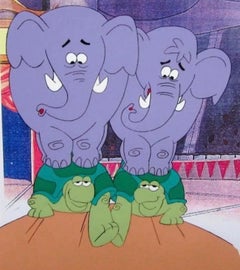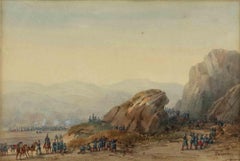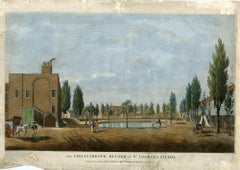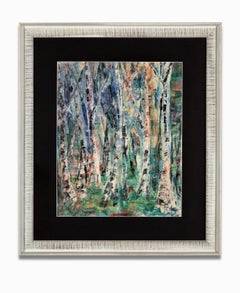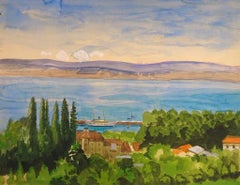Paint Landscape Prints
1990s Pop Art Paint Landscape Prints
Ink, Acrylic
19th Century Modern Paint Landscape Prints
Watercolor
19th Century Paint Landscape Prints
Watercolor, Etching
Early 19th Century English School Paint Landscape Prints
Handmade Paper, Watercolor, Engraving
20th Century American Impressionist Paint Landscape Prints
Paper, Oil
20th Century Modern Paint Landscape Prints
Tempera
19th Century Paint Landscape Prints
Watercolor, Etching
Late 19th Century Modern Paint Landscape Prints
Etching, Watercolor
Early 2000s Contemporary Paint Landscape Prints
Watercolor, Pencil, Etching
1950s Paint Landscape Prints
Tempera
1990s Contemporary Paint Landscape Prints
Watercolor
1980s Contemporary Paint Landscape Prints
Watercolor, Ink
1890s Naturalistic Paint Landscape Prints
Ink, Watercolor
19th Century Modern Paint Landscape Prints
Watercolor, Etching
1870s Realist Paint Landscape Prints
Watercolor
1970s Contemporary Paint Landscape Prints
Watercolor, Etching
1970s Contemporary Paint Landscape Prints
Watercolor, Etching
1970s Contemporary Paint Landscape Prints
Watercolor, Etching
1990s Contemporary Paint Landscape Prints
Linen, Acrylic
1990s Pop Art Paint Landscape Prints
Ink, Acrylic
1990s Pop Art Paint Landscape Prints
Ink, Acrylic
1990s Pop Art Paint Landscape Prints
Ink, Acrylic
21st Century and Contemporary Contemporary Paint Landscape Prints
Glitter, Watercolor, Archival Paper, Screen
21st Century and Contemporary Contemporary Paint Landscape Prints
Oil
1990s Contemporary Paint Landscape Prints
Linen, Acrylic
1980s Folk Art Paint Landscape Prints
Canvas, Acrylic
1990s Contemporary Paint Landscape Prints
Linen, Acrylic
1990s Contemporary Paint Landscape Prints
Linen, Acrylic
1990s Pop Art Paint Landscape Prints
Ink, Acrylic
1890s Art Deco Paint Landscape Prints
Watercolor, Woodcut
1990s Pop Art Paint Landscape Prints
Ink, Acrylic
1990s Pop Art Paint Landscape Prints
Ink, Acrylic
1990s Pop Art Paint Landscape Prints
Ink, Acrylic
Early 19th Century Realist Paint Landscape Prints
Watercolor, Pencil
2010s Abstract Paint Landscape Prints
Emulsion, Mixed Media, Watercolor, Photographic Paper, Lithograph, Monop...
2010s Contemporary Paint Landscape Prints
Canvas, Oil
2010s Abstract Expressionist Paint Landscape Prints
Oil, Watercolor, Monoprint
2010s Naturalistic Paint Landscape Prints
Emulsion, Watercolor, Other Medium
1980s Modern Paint Landscape Prints
India Ink, Watercolor
2010s Abstract Expressionist Paint Landscape Prints
Oil, Watercolor, Monoprint
2010s Abstract Expressionist Paint Landscape Prints
Oil, Watercolor, Monoprint
2010s Abstract Expressionist Paint Landscape Prints
Oil, Watercolor, Monoprint
2010s Abstract Expressionist Paint Landscape Prints
Oil, Watercolor, Monoprint
2010s Abstract Expressionist Paint Landscape Prints
Oil, Watercolor, Monoprint
2010s Abstract Expressionist Paint Landscape Prints
Oil, Watercolor, Monoprint
21st Century and Contemporary Contemporary Paint Landscape Prints
Acrylic
2010s Abstract Geometric Paint Landscape Prints
Mixed Media, Emulsion, Watercolor, Photographic Paper, Monotype, Monoprint
1920s Paint Landscape Prints
Alkyd, Lithograph
21st Century and Contemporary Contemporary Paint Landscape Prints
Acrylic
21st Century and Contemporary Contemporary Paint Landscape Prints
Mixed Media, Watercolor, Archival Paper, Pencil
21st Century and Contemporary Impressionist Paint Landscape Prints
Paper, Watercolor, Pencil, Color Pencil, Screen
20th Century Realist Paint Landscape Prints
Canvas, Oil
21st Century and Contemporary Paint Landscape Prints
Oil, Board
21st Century and Contemporary Modern Paint Landscape Prints
Canvas, Mixed Media, Acrylic, Pigment
20th Century Realist Paint Landscape Prints
Canvas, Oil
2010s Paint Landscape Prints
Watercolor, Giclée
2010s Contemporary Paint Landscape Prints
Canvas, Oil
Mid-19th Century Paint Landscape Prints
Paper, Printer's Ink, Watercolor
2010s Pop Art Paint Landscape Prints
Watercolor, Pen, Permanent Marker
1830s Academic Paint Landscape Prints
Watercolor, Etching
